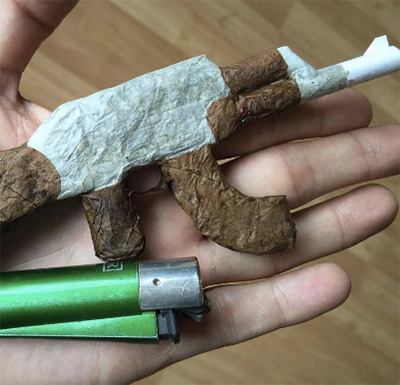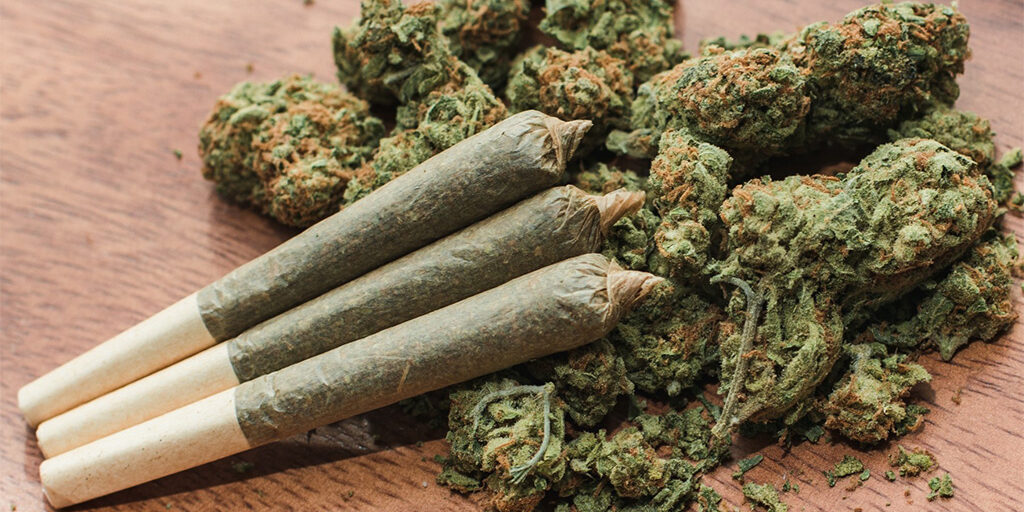Cannabis Culture: The Journey of the Joint
People weren’t always consuming cannabis in rolling papers as we do today. Thousands of years ago, no one envisaged smoking their marijuana in the pre-roll form that has now warmed their way into the hearts of numerous cultures around the world. It had always been through hookahs, pipes, or chillums.
So how did the transition begin? Was it sudden as in a revolution or as slow as a snail’s pace? Come along for a brief overview of how the joint, as we know it today, made its way to the top.
When Was the First Joint Smoked for Recreational Purposes?
History has it that Mexico is the country where the use of joints was first recorded. The truth, however, is that cannabis had always been in use, but for medicinal purposes only. Joints were only used for recreation for the first time in Mexico. This knowledge was first brought to light by a University of Guadalajara pharmacist who announced that laborers were adding cannabis to their tobacco to smoke.
Little wonder why the cultural links to the Mexican roots of cannabis remain obvious. For example, “roach” originates from “La Cucaracha,” a Mexican song that narrates how a cockroach couldn’t get up because there was no more joint to smoke.
The Boston Medical and Surgical Journal, an 1870 publication, contains the earliest known record of cannabis cigarettes as a commercial commodity. Grimault’s Indian Cigarettes was a potent mix of belladonna leaves, cannabis resin, and a hint of potassium nitrate. They were touted to be effective treatments for respiratory ailments. The mixture was said to provide patients relief from asthma attacks by deconstructing the bronchial tubes and increasing the flow of oxygen to the lungs.
The Early 20th Century Joints
 Cannabis started gaining popularity in the early 20th century among the African American community when the forerunner of Marcus Garvey’s Rastafarian movement spurred it on. The average jazz musician at the time would choose cannabis over alcohol over and over again as it kept their creative fire burning without limiting their motor control.
Cannabis started gaining popularity in the early 20th century among the African American community when the forerunner of Marcus Garvey’s Rastafarian movement spurred it on. The average jazz musician at the time would choose cannabis over alcohol over and over again as it kept their creative fire burning without limiting their motor control.
This was also the period cannabis started amassing numerous nicknames, which are still in use today. The common ones that originated during this period include joint, reefer, and muggle which the Harry Potter Enterprise made more popular. Other ones that are no longer in use today but were popular then include joy smoke, killer, and good butt.
Alcohol became a prohibited substance in 1920, making its closest alternative—cannabis, even more popular. Since cannabis retained its legal status in the majority of the states at the time, it was common to see cannabis smokers rolling reefers in public spaces without fear of sanctions. Then came the “Reefer Madness” propaganda which aimed to place and increase restrictions on the use of the plant.
This eventually led to the Marihuana Tax Act of 1937, which banned the sale and possession of cannabis. During this period, the media targeted joints with numerous school textbooks and newspapers that there was a ploy to drug kids and drive them mad through cannabis-spiked cigarettes.
How Cannabis Regained Its Popularity
Fortunately, in the 1960’s, people started to see the Reefer Madness propaganda for what it was—misleading information to promote a cause. This was also the era when the public realized how unjust the Vietnam conflict was. At this point, they realized that cannabis didn’t drive people into a homicidal frenzy. It also didn’t turn humans into maniacal sex addicts or make them see demons as was once thought.
As people started to see the authority in a different light, they saw smoking cannabis as a nonviolent way to register their disapproval of the broken system. They also used it as a way to unite people under the counter-cultural revolutionary umbrella of peace and love.
In no time, hippies took advantage of the happenings to start unique fashion trends by producing special jewelry and accessories for stoners. The manufacturers of rolling papers weren’t going to be left out of the fun too. They started creating wider paper styles that appealed to smokers who were already used to rolling very thick cigarettes. Cannabis eventually became so popular that marijuana smoking was the norm even among soldiers in Vietnam.
Modern Day Ganja
 Marijuana smoking has become so sophisticated that the level of customization available to cannabis lovers is nothing like what was ever seen in previous times. Sophisticated cannabis users now have a myriad of options, from a wide variety of strains to power-packed pre-rolls, special papers, and everything in between. Courtesy of the internet, professional joint rollers have made some unbelievable art viewable to all.
Marijuana smoking has become so sophisticated that the level of customization available to cannabis lovers is nothing like what was ever seen in previous times. Sophisticated cannabis users now have a myriad of options, from a wide variety of strains to power-packed pre-rolls, special papers, and everything in between. Courtesy of the internet, professional joint rollers have made some unbelievable art viewable to all.

